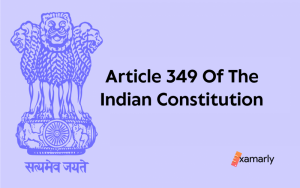Ruknuddin Firuz Shah ruled over the Delhi Sultanate for almost 7 months in 1236. He had presided over the Sultanate’s Badaun (with the support of Ainul Mulk Husain Ash’ari) and Lahore provinces as a prince.
After the passing of his father Sultan Iltutmish, a strong Mamluk monarch, he took the throne.
Ruknuddin, however, preferred to pursue pleasure and put Shah Turkan, his mother, in charge of running the administration, thus they both were arrested and imprisoned as a result of rebellions caused by this poor governance. Then Razia sultan got the throne
Take a look at this article on Ruknuddin Firuz. For those studying medieval history for the UPSC, this piece is worthwhile reading.
- What is Slave Dynasty?
- Early Life Of Ruknuddin Firuz Shah
- Reign
- Incarceration And Demise
- Conclusion
- Frequently Asked Questions
- Who followed Iltutmish in power?
- Who was the daughter of the Iltutmish?
- Who was Ruknuddin Firuz?
- How did Ruknuddin Firuz become the ruler?
- What led to Ruknuddin Firuz's downfall?
- What was Ruknuddin Firuz's reign known for?
- Who succeeded Ruknuddin Firuz as the ruler of Delhi?
- What was the Slave Dynasty?
- When did the Slave Dynasty come to power?
What is Slave Dynasty?
The Slave Dynasty, also known as the Mamluk Dynasty, was the first Muslim dynasty that ruled India. It was founded in 1206 by Qutb-ud-din Aibak, a former slave who had risen to prominence in the court of the Ghurid Empire in Afghanistan.
The dynasty ruled over parts of present-day India, Pakistan, and Bangladesh for about 90 years. During their reign, the Slave rulers established a strong administrative system, introduced new architectural styles, and encouraged the spread of Islam in India.
The dynasty also saw several important rulers, including Razia Sultana, the first and only female ruler of the Delhi Sultanate.
Early Life Of Ruknuddin Firuz Shah
Rukn-ud-din Firuz Shahlikewise written as Rukn al-Din Firoz was born to Shah Turkan. Ruknuddin’s mother khudawanda-i-Jahan Shah Turkan was a Turkish lady who was offended by him in her youth.
In 1229, Nasiruddin Mahmud, who had been raised to be the successor of his father Iltutmish, passed away. Before leaving on his Gwalior campaign in 1231, Iltutmish nominated his daughter Razia to manage the government of Delhi.
Notwithstanding the opposition of the Turkish nobles, Razia Sultan commanded the government. As a result, when Iltutmish returned, he ordered the production of a proclamation designating Razia as his clear heir.
Iltutmish claimed that after his death, his remaining sons would be too preoccupied with amusing activities to manage the empire.
But before he passed away, Iltutmish appears to have given his permission to name his son Ruknuddin as his heir. He made Rukn al-din Firoz the administrator of Lahore in 1233.
Explore the linked article to gain more knowledge about Iltutmish, the Sultan of Delhi.
Reign
After his father Iltutmish died, Ruknuddin Firoz Shah ascended to the throne. His rule was brief. He was an ineffective ruler who was ousted by Raziya (Sultan Raziyyat-Ud-Dunya Wa Ud-Din), which caused the sultanate to split into numerous groups and divided the Ruknuddin families.
Three characteristics that Ruknuddin Firoz shah was commended for were his good looks, his calm demeanour, and his kind disposition. Experience had shown us that Rukn-ud-Din was a complete loser.
He completely abandoned the business of the administration and spent the majority of his time sating his sexual appetite.
Ruknuddin used to ride drunk on elephants around bazaars, scattering gold coins, and he had a strong preference for mahouts who rose to prominence in his court. Buffoons and fiddlers were his companions.
Shah Turkan, the ambitious mother Rukn-ud-Din was given control of the administration. Her previous life was as a Turkish handmaid. She vowed to exact revenge on everyone who had wronged her in her youth. Some of them were humiliated while others were put to death.
Uprisings
Shah Turkan was known for donating to charities and temples. But after taking over the government, she underwent a shift. She attempted to exercise her dictatorial powers by killing some women in Iltutmish’s harem and taking their privy purses from others.
Qutubuddin Aibak, the young son of Iltutmish, was also blinded and killed by her and Ruknuddin Firuz shah. All these evil deeds inflamed the nobility of Turkey with anger and sparked many uprisings:
- Malik Ghiyasuddin Muhammad Shah challenged Ruknuddin, he ransacked several settlements and stole the Lakhnauti wealth that was being transported to Delhi.
- The current Iqta’ of Badaun, Malik Izzuddin Muhammad Salari, also broke away.
- Ruknuddin was opposed by Malik Izzuddin Kabir Khan Ayaz (Multan), Malik Saifuddin Kuchi (Hansi), and Malik Alauddin Jani.
Check the linked article to discover more about the Iqta System In Delhi Sultanate.
Rebels joined the two non-Turkish officers Nizamul Mulk Muhammad Junaidi after standing up. Ruknuddin’s wazir (prime minister), Nizamul Mulk Junaidi, dispatched an army to fight the rebels. Later joined Salari after fleeing the army at Kailugarhi.
Carnage Of Tazik Officers
There were two main groups of officers under Ruknuddin’s father Iltutmish: slaves of Turkic descent and non-slaves of Tazik heritage. Prime minister Junaidi was one of the Tazik officials.
Following the uprisings against Ruknuddin, several Tazik officers were to be killed in the Mansurpur-Tarain region according to plans made by the Turkic officers, who made up the majority of Ruknuddin’s army.
As a result, several crucial Tazik officers perished, these included Tajul Mulk Mahmud, Ziyal Mulk, Nizamuddin Shafurqani, and many more officers.
Similar Posts:
- Tughlaq Dynasty: Medieval Indian History UPSC Notes
- Khilji Dynasty: Medieval Indian History UPSC Notes
- Lodi Dynasty: Medieval Indian History Notes
- Sayyid Dynasty Of Delhi Sultanate
Incarceration And Demise
Ruknuddin marched toward Kuhram to engage the rebels. In the meantime, at a Delhi congregational prayer, his half-sister Razia Sultan agitated the audience against Shah Turkan. Following an attack on the royal palace by a mob, Shah Turkan was then imprisoned.
The people and the Turkish nobles installed Razia as king. When Razia became the new ruler, she imprisoned her mother and brother right away. On November 19, 1236, Firoz also passed away after a six-month, 28-day reign.
Conclusion
Since he was an incapable ruler and inept Sultan, the reign of Ruknuddin Firuz lasted for a mere 7 months.
The period, yet, marked a significant watermark in highlighting the internal dynamics and conflicts present within the Delhi Sultanate, and also a series of succession and accession to the throne followed.
In many ways, Ruknuddin Firuz represents the contradictions and challenges of the Delhi Sultanate. While he was able to seize power, he ultimately lacked the support of the nobility and was unable to maintain his position for long.
His reign is a reminder of the violent and unstable nature of medieval Indian politics, as well as the role that individual rulers could play in shaping the fate of their kingdoms.
Ultimately, Ruknuddin Firuz’s legacy serves as a testament to the enduring power of the Delhi Sultanate, as well as the complex historical forces that shaped the region.
If you are preparing for the UPSC history exam, this article will help you to boost your preparation!
Frequently Asked Questions
Who followed Iltutmish in power?
His son, Ruknuddin Firuz Shah, followed him.
Who was the daughter of the Iltutmish?
Razia Sultan was the daughter of Iltumish. From 1236 to 1240, she functioned as the ruler of the Delhi sultanate.
Who was Ruknuddin Firuz?
Ruknuddin Firuz was the last ruler of the Slave Dynasty in India, who ruled from 1236 to 1237.
How did Ruknuddin Firuz become the ruler?
Ruknuddin Firuz became the ruler after the death of his father, Shamsuddin Iltutmish, who was the third Sultan of Delhi from the Slave Dynasty.
What led to Ruknuddin Firuz’s downfall?
Ruknuddin Firuz’s downfall was a result of his unpopular rule, which was marked by corruption, nepotism, and the execution of several noble families. His subjects and the nobles revolted against him, leading to his capture and execution.
What was Ruknuddin Firuz’s reign known for?
Ruknuddin Firuz’s reign was marked by political instability, economic decline, and the loss of territory to rival kingdoms. He was also notorious for his tyrannical rule and the execution of several noble families.
Who succeeded Ruknuddin Firuz as the ruler of Delhi?
After Ruknuddin Firuz’s capture and execution, his brother Razia Sultan became the ruler of Delhi. She was the first and only female ruler of the Slave Dynasty.
What was the Slave Dynasty?
The Slave Dynasty was a Muslim dynasty that ruled over parts of northern India from 1206 to 1290. It was the first Muslim dynasty to rule over the Indian subcontinent.
When did the Slave Dynasty come to power?
The Slave Dynasty came to power in 1206 when Qutubuddin Aibak, a former slave of Sultan Muhammad Ghori, established the Delhi Sultanate after the Ghurid Empire’s collapse.






